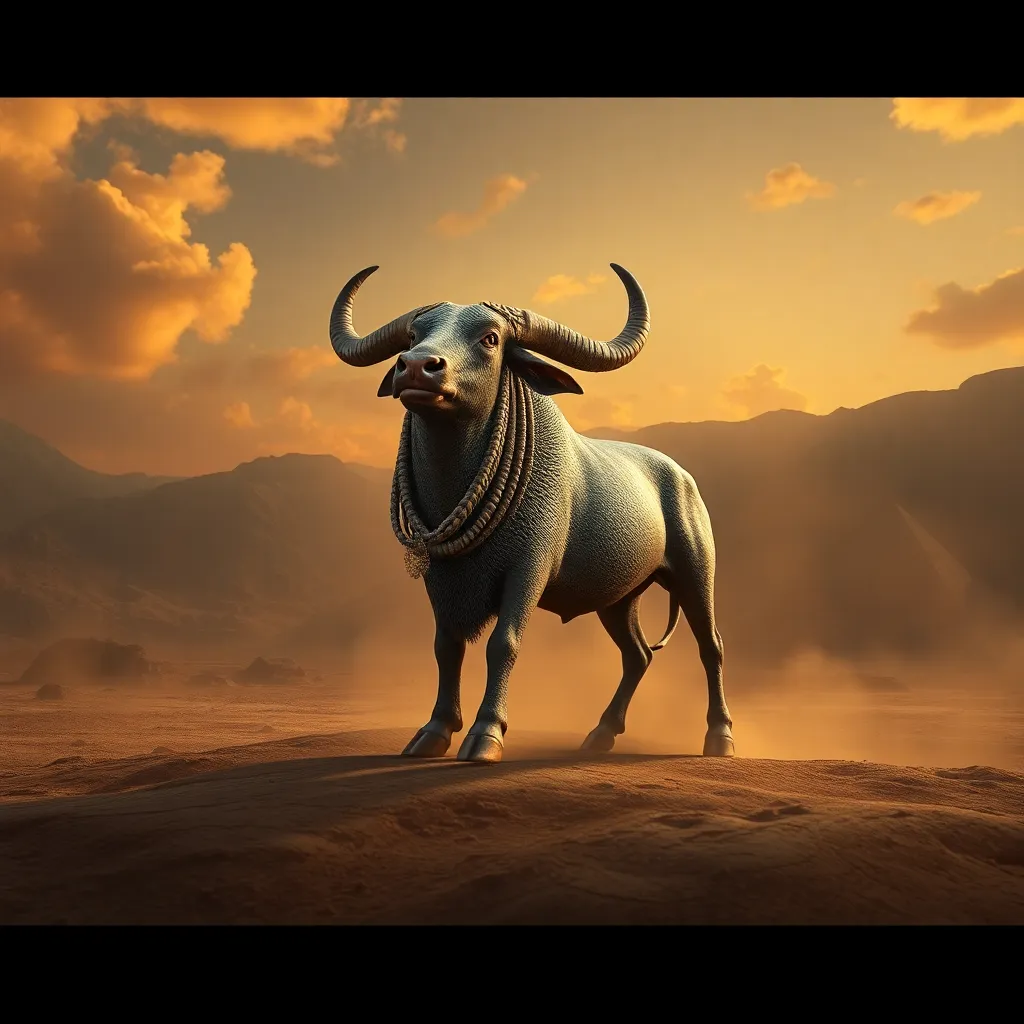The Apis Bull: Myths of Life, Death, and Afterlife
I. Introduction to the Apis Bull
The Apis Bull holds a significant place in ancient Egyptian culture, embodying the ideas of fertility, strength, and divinity. Revered as a living manifestation of the god Ptah, the Apis bull symbolized not only agricultural abundance but also the vital connection between the earthly realm and the divine.
In ancient Egypt, bulls were often associated with virility and power, and the Apis bull stood out as a supreme symbol of these attributes. This article will delve into the intricate myths and cultural practices surrounding the Apis bull, exploring its life, death, and profound significance in the afterlife beliefs of the ancient Egyptians.
II. The Physical Characteristics of the Apis Bull
The Apis bull was distinguished by its unique physical traits, which were believed to be manifestations of its divine nature. Each Apis bull was identified by specific markings, including:
- A black coat with a white diamond shape on its forehead
- A white patch on its back
- Distinctive markings on its body, which were thought to possess spiritual significance
These characteristics were essential for identifying the Apis bull, as it was believed that the bull’s appearance was a direct reflection of its divine essence. In religious iconography, the Apis bull was often depicted alongside deities, symbolizing its important role in the pantheon of Egyptian gods.
III. The Life Cycle of the Apis Bull
The life cycle of the Apis bull was steeped in ritual and reverence. The birth of an Apis bull was considered a significant event, with specific criteria for selection. The process involved:
- Identification of the bull by priests, who sought out a calf that met the divine criteria
- Confinement and care of the chosen calf within sacred precincts
Throughout its life, the Apis bull was the center of numerous rituals and responsibilities. It was cared for by priests and was involved in various ceremonies, including:
- Daily offerings and worship in its temple
- Participation in festivals that celebrated agricultural abundance and fertility
IV. Death and Mourning Rituals
The death of the Apis bull was a moment of profound sorrow and cultural significance for the ancient Egyptians. It was believed that the bull’s death symbolized the end of a divine presence on Earth. The mourning practices included:
- Public displays of grief, where citizens would wear black and participate in mourning rituals
- Elaborate funerary rites, including embalming and burial in a specially designated tomb
The public’s reaction was one of deep respect and sorrow, as the Apis bull was not merely an animal; it was a revered deity that had embodied their beliefs and hopes.
V. Myths Surrounding the Afterlife of the Apis Bull
Beliefs about the afterlife of the Apis bull were intertwined with the mythology of Osiris and resurrection. The ancient Egyptians believed that upon its death, the Apis bull embarked on a journey to the afterlife. Key beliefs included:
- The bull’s soul would be reunited with Osiris, the god of the afterlife
- The idea that the Apis bull would be resurrected, symbolizing the cyclical nature of life and death
This connection to Osiris reinforced the notion of immortality and the continuity of life beyond physical existence, providing hope and comfort to the people.
VI. The Apis Bull in Religious Practices
Temples dedicated to the Apis bull were prominent in ancient Egypt, particularly in Memphis, where it was worshipped in grand ceremonies. The bull played a vital role in various religious practices, including:
- Daily rituals performed by priests to honor the bull’s divine nature
- Sacrificial rites, where offerings were made to ensure the bull’s favor and blessings for the community
Festivals celebrating the Apis bull were occasions of great joy and reverence, drawing large crowds who participated in the festivities to honor their beloved deity.
VII. The Legacy of the Apis Bull in Ancient Egyptian Beliefs
The legacy of the Apis bull extends beyond its time, influencing later Egyptian religious thought and practices. The symbolism associated with the bull can be seen in various aspects of:
- Art, where the Apis bull was depicted in sculptures and paintings
- Literature, where myths surrounding the bull were recorded and passed down
- Modern interpretations, where the Apis bull continues to be a subject of interest among scholars and enthusiasts
This enduring legacy highlights the Apis bull’s importance as a cultural and spiritual icon in ancient Egyptian society.
VIII. Conclusion: The Apis Bull’s Enduring Symbolism
The Apis bull stands as a powerful symbol of life, death, and the afterlife in ancient Egyptian mythology. Its representation of fertility and divine strength resonates through the ages, reflecting the deep spiritual beliefs of a civilization that sought to understand the mysteries of existence.
In contemporary discussions of life, death, and the afterlife, the myths surrounding the Apis bull remain relevant, reminding us of the universal quest for meaning and connection to something greater than ourselves. As we reflect on the Apis bull, we recognize its role as a cultural and spiritual icon, embodying the enduring human fascination with the cycle of life and the mysteries that lie beyond.




